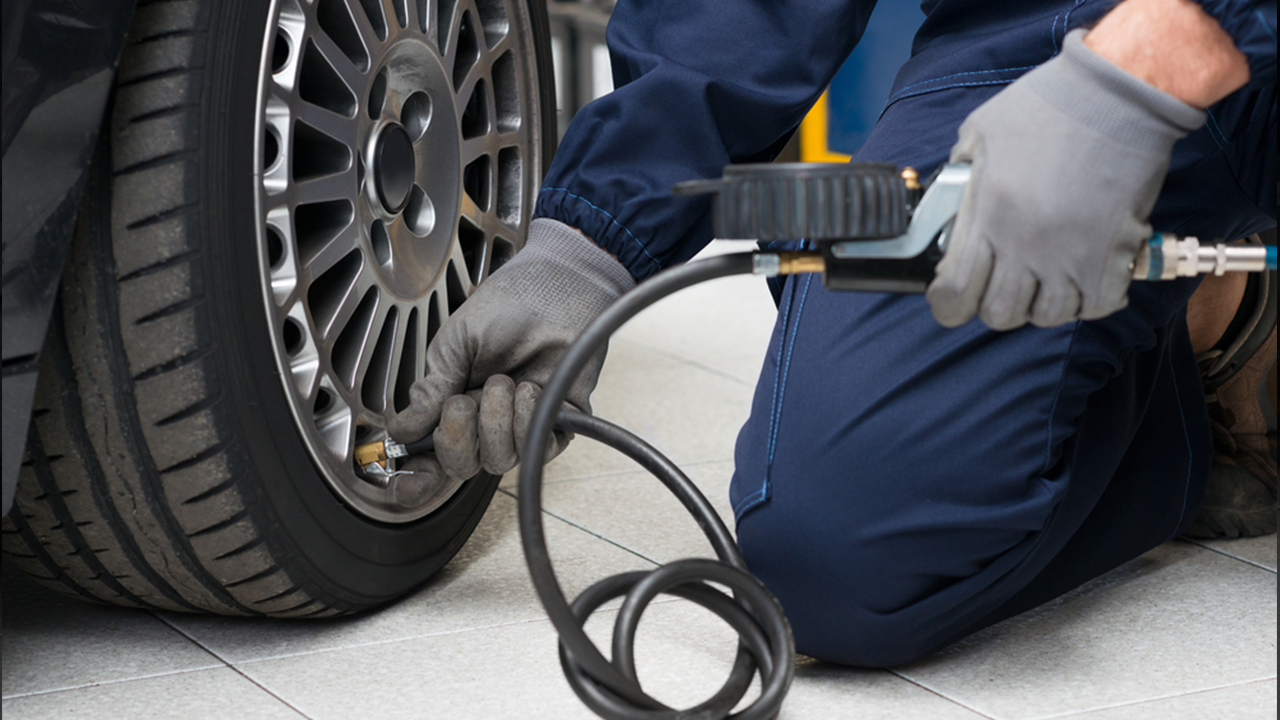Airline system or Pneumatic system uses compressed gas to transmit power from one location to another or to enable something operational in particular manner by controlling its flow. However, an airline system requires components or equipment’s to operate with an application of force. Although, we often associate the system and airline equipment’s with big and complex industrial machines, the system has many examples from our daily life as well. Bicycle pumps, Brakes on buses and trucks, Jackhammer, Pneumatic nail guns and Tyre pressure gauges.
Here, we will discuss in detail about Tyre Inflation Gauge or Air Gauge, an airline equipment that seems a small part of the system but plays an integral role.
What is Tyre Inflation Gauge?
On multiple occasions, you must have been told the significance of rightly inflated tyres. A Tyre Inflation Gauge is a pressure gauge that helps in measuring the pressure of a tyre on a vehicle. Since it is integral to maintain optimum tyre pressure for efficient and safe vehicle performance, Tyre Gauge helps in keeping regular checks for appropriate pressure. Maintaining the perfect air pressure implies
- Safer on roads
- Improves fuel efficiency
- Extends the life of the tyres of your vehicle
Types of Air Gauges
It is always a good practice to check your tyres in morning before leaving for the day, especially when they are cold. Ensure to measure the pressure for all four tyres with a pressure gauge, including the spare tyre. Since tyres tend to lose pressure over time on their own, make a rule to check them at least once a month. Let’s take a look into different types of gauges available in the market.
Conventional Tyre Inflation Gauge
Simple and affordable, Conventional type is shaped like a pencil with metal exterior. When attached to the tyre’s valve system, pressure forces the interior plastic white column to slide out due the force of air displaying a set of measurements. Although, the pencil gauges are easy to carry, they are a bit difficult to read and can be more inaccurate than other two counterparts.
Dial Tyre Inflation Gauge
Also referred to as analogue gauge, these gauges offer round display, almost like a clock with a needle indicator to display tyre pressure. Dial gauges are easy to read, but they take more space for storage. In case of a drop or knocking around, they are susceptible to show inaccurate reading.
Electronic Tyre Inflation Gauge
Electronic Gauge is definitely most advanced out of the three versions with the reading displayed on electronic LCD screen. They tend to show measurement that is more accurate and are more dust and dirt resistant. They are slightly bulkier than the other two as these gauges operate on battery. However, as an added bonus, some electronic gauges tend to be backlit making it easy to read in dark places.
Right PSI level
PSI stands for Pounds per square inch. The PSI for any vehicle is advised based on its manufacturer and tyre size. Now the big question is which recommended PSI level is the right: the one mentioned on the tyre or the figure specified in the owner’s manual or the one we see on the fuel door or glove box door.
It is always recommended not to use the maximum PSA printed on the tyre walls. It usually implies maximum allowed pressure. The ideal PSI level is always less than this figure. Over-inflation can cause discomfort, wobbling of vehicle, overheating and blowouts. PFI level over 40 is dangerous for most vehicles. Always refer to the PSI level mentioned in your owner’s manual and ensure not to go any more than 5 PSI over the advised level.
For most cars, the recommended tyre pressure ranges between 30 to 35 PSI.
How to Check Tyre Pressure
An easy task to perform, this is where the Pressure Gauge or Inflator Gauge comes in to scene. Firstly, ensure whenever you are checking your tyre pressure, they are relatively cold. Avoid checking them after a long drive, as the reading tends to be inaccurate owing to temporary heat that increases the tyre pressure.
Regardless of the type of pressure gauge you own, practice using it. It is always better to practice a few times beforehand than when you really need it. Make sure to keep a close eye on your tyre pressure to prevent problems on road. Always remember to
- Buy a tyre Inflator Gauge and keep it handy in your vehicle all the time. You can opt for any of the above-mentioned three options.
- Always make sure to understand the concept of right PSI level for your vehicle. Make sure not to overinflate or under inflate the tyre pressure. The accurate pressure based on vehicle weight and size of the tyre can be found in owner’s manual.
- Use your pressure gauge properly. Ensure to press down the gauge firmly on the valve stem to get accurate reading.
- In case the pressure of tyre is low, use an inflator to fill up your tyres.
Maintaining the right tyre pressure improves overall performance of vehicle by improving fuel consumption, averting uneven wear and extending the life of tyres. We never realize how we use airline equipment such as Air Inflator Gauge in our everyday life that allows safe, efficient and comfortable drive year around. Explore a wide collection of various air service products, airline equipment’s including Tyre Inflation Gauge for your requirements.
